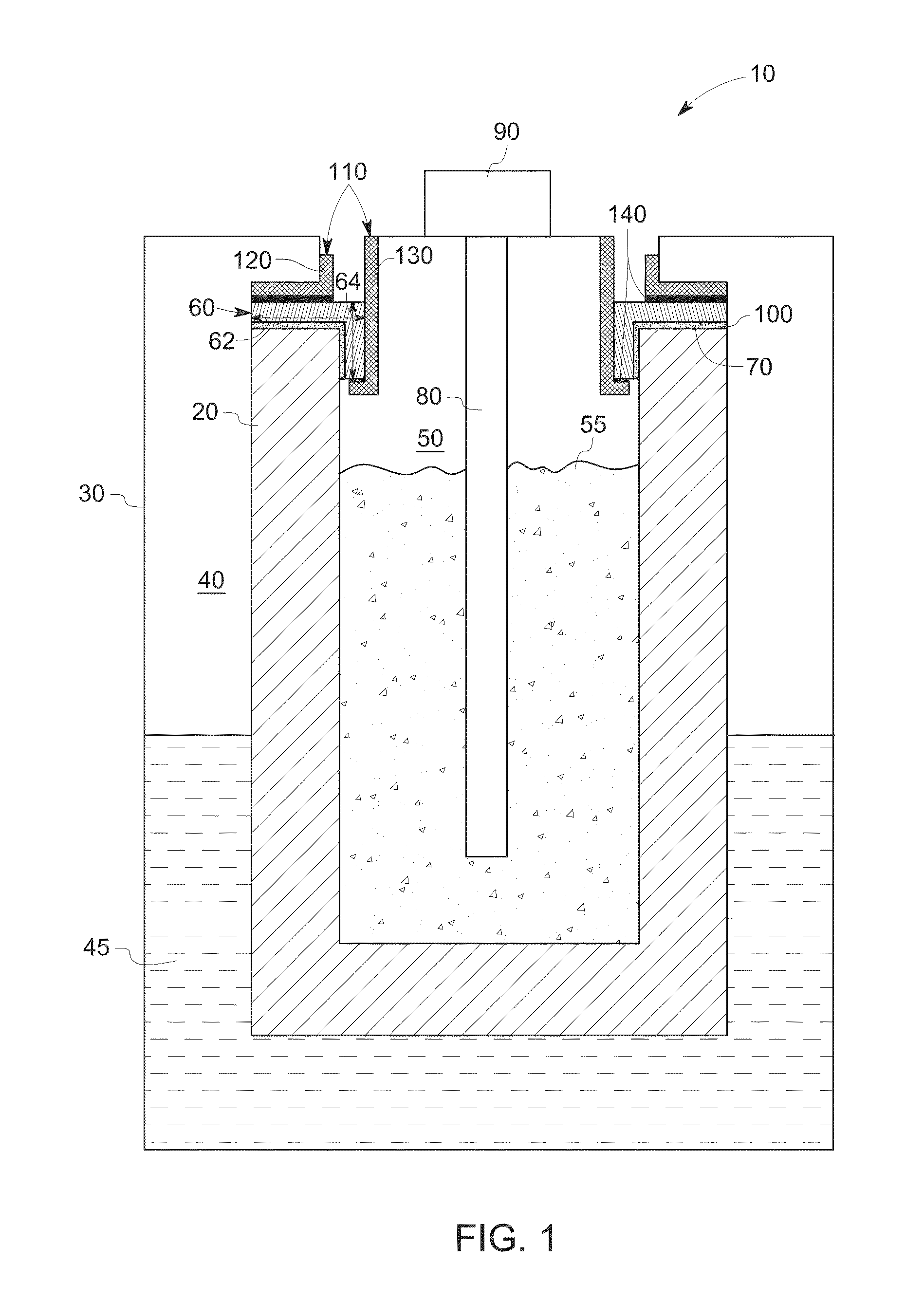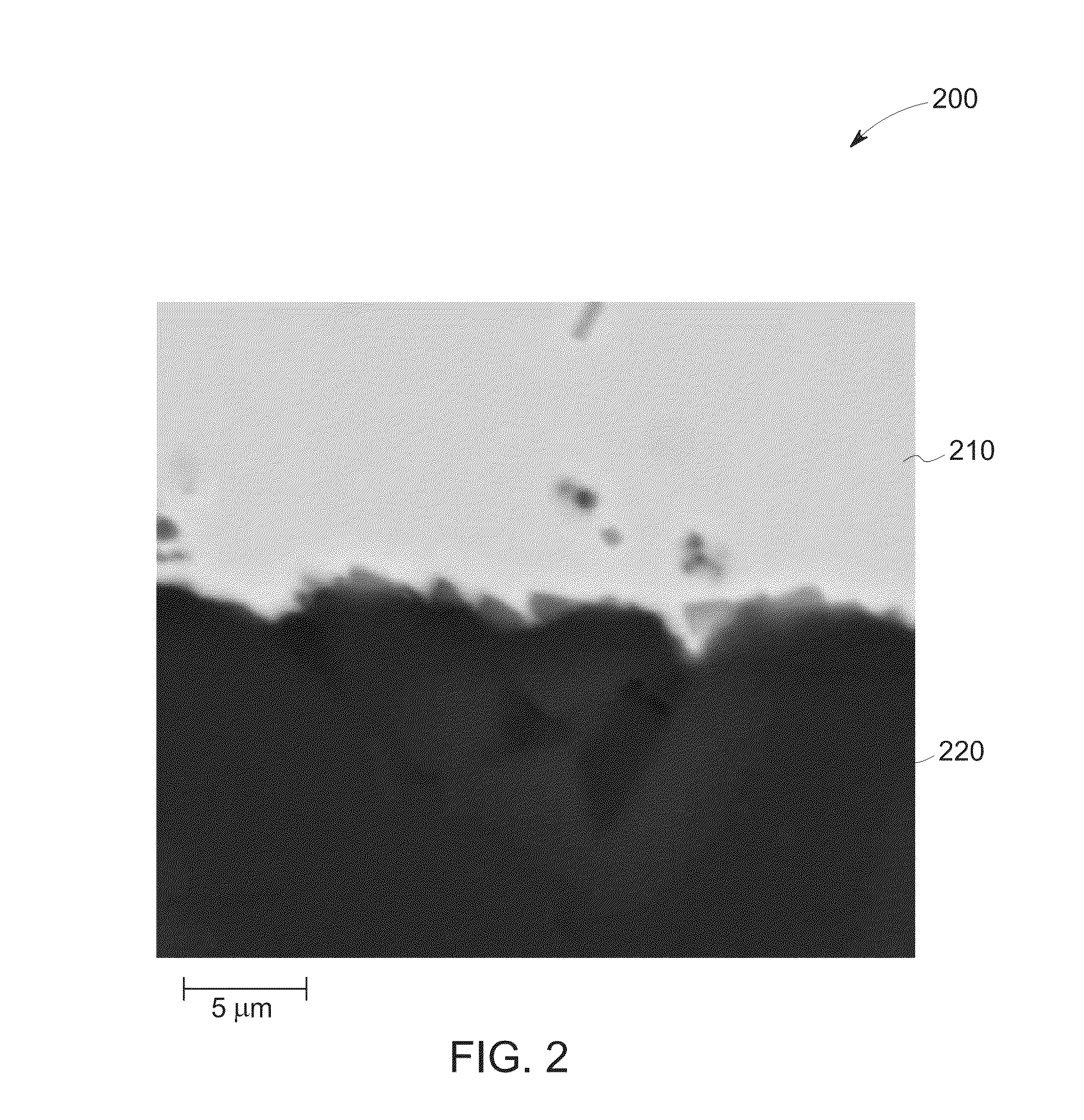Braze compositions, and related articles and methods
a composition and braze technology, applied in the field of braze compositions, can solve the problems of metal-to-ceramic bonding with several problems, the method is relatively expensive, and the seal may not withstand high temperatures and corrosive environments
- Summary
- Abstract
- Description
- Claims
- Application Information
AI Technical Summary
Benefits of technology
Problems solved by technology
Method used
Image
Examples
example 1
[0050]3 braze alloy compositions (samples 1-3) were prepared. For each braze sample, individual elements were weighed according to the desired composition, as shown in Table 1. These elements were arc-melted to provide an ingot for each composition. To ensure homogeneity of the compositions, the ingots were triple-melted. These ingots were then characterized for measuring liquidus temperatures and coefficients of thermal expansion by using Differential Scanning calorimeter (DSC), and a dilatometer, respectively. The liquidus temperatures for each sample are shown in Table 1. The measured coefficient of thermal expansion for sample 1 was about 16.4 ppm per degree Celsius, in the temperature range of about 50 degrees Celsius to about 700 degrees Celsius. The ingots were melt-spun into thin (about 25 micron thick) ribbons, in a pure argon atmosphere.
TABLE 1BrazeBraze alloy compositionLiquidus temperatureSamples(weight percent)(degrees Celsius)Sample 1Ni—26Ge—3Ti1155Sample 2Ni—25Ge—10Pd...
PUM
| Property | Measurement | Unit |
|---|---|---|
| Temperature | aaaaa | aaaaa |
| Temperature | aaaaa | aaaaa |
| Percent by mass | aaaaa | aaaaa |
Abstract
Description
Claims
Application Information
 Login to View More
Login to View More - R&D
- Intellectual Property
- Life Sciences
- Materials
- Tech Scout
- Unparalleled Data Quality
- Higher Quality Content
- 60% Fewer Hallucinations
Browse by: Latest US Patents, China's latest patents, Technical Efficacy Thesaurus, Application Domain, Technology Topic, Popular Technical Reports.
© 2025 PatSnap. All rights reserved.Legal|Privacy policy|Modern Slavery Act Transparency Statement|Sitemap|About US| Contact US: help@patsnap.com



